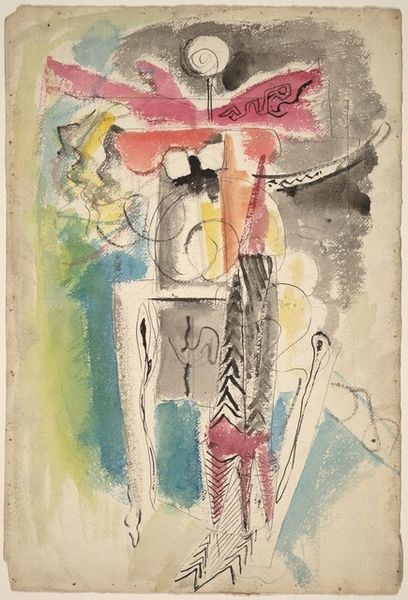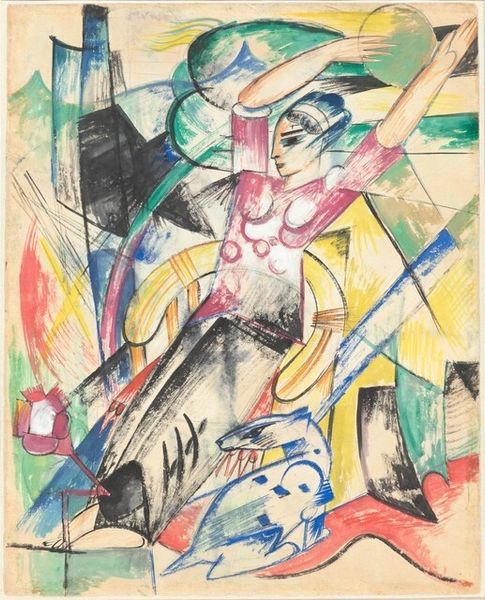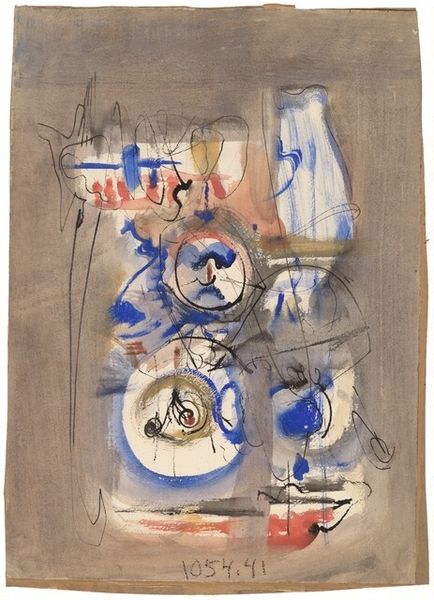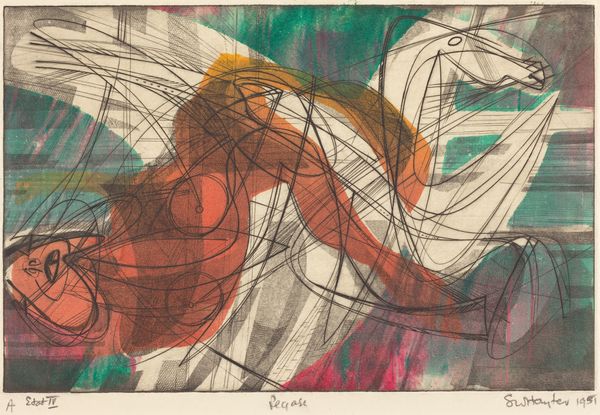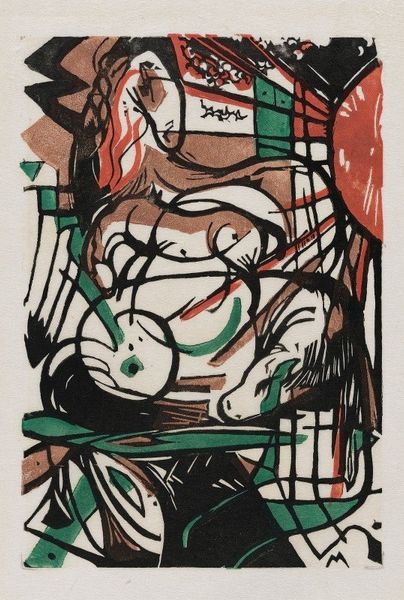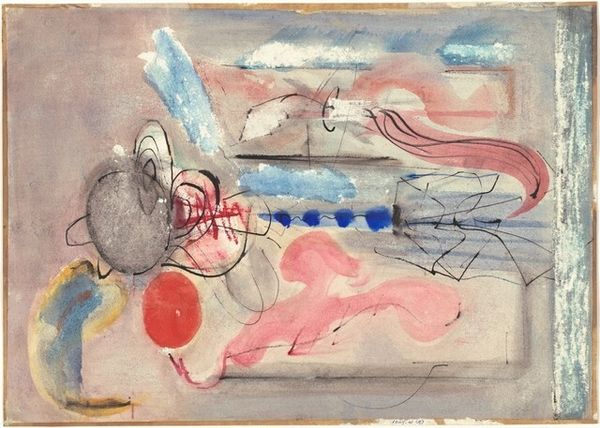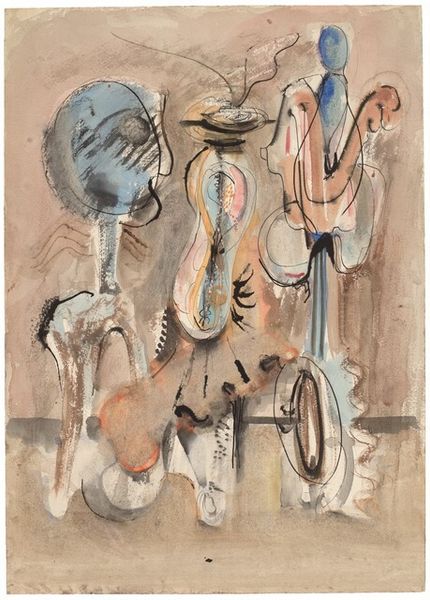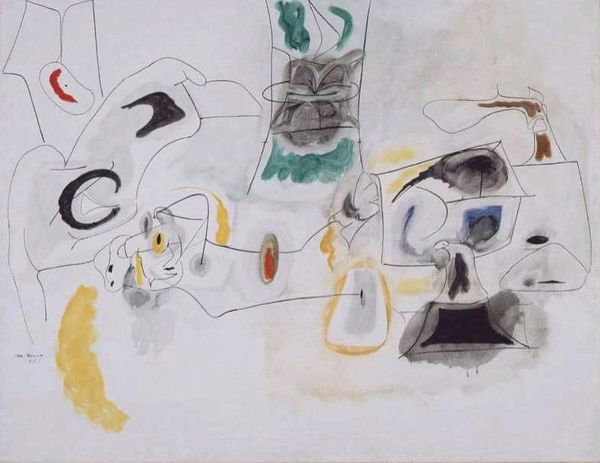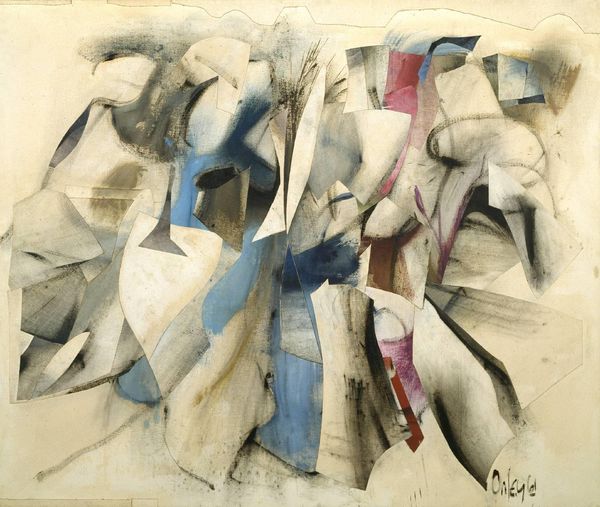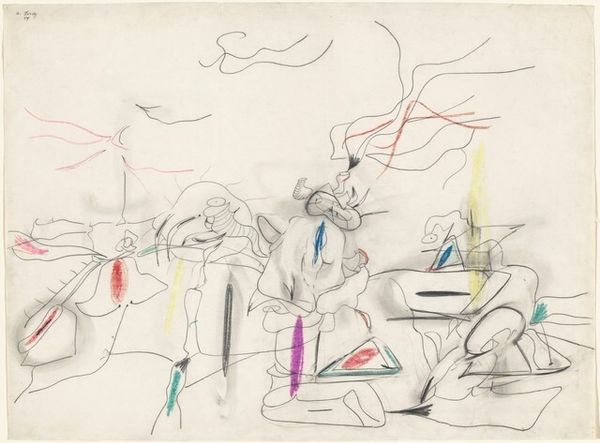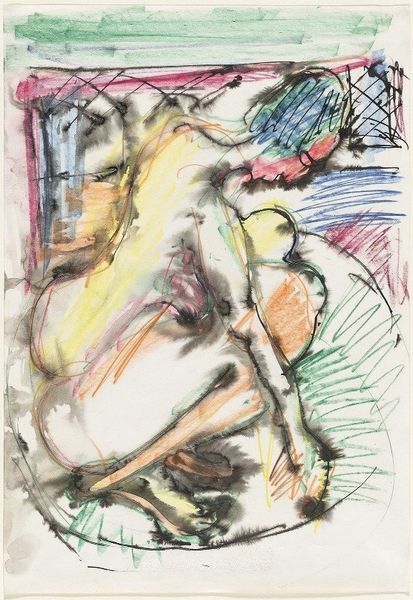
drawing, watercolor
#
abstract-expressionism
#
drawing
#
form
#
watercolor
#
biomorphic
#
abstraction
#
line
Dimensions: overall: 37.7 x 53 cm (14 13/16 x 20 7/8 in.)
Copyright: National Gallery of Art: CC0 1.0
Editor: So, this is Mark Rothko's "Abstraction," made between 1944 and 1946 using watercolor and drawing techniques. There's something really intriguing about its almost dreamlike quality and how the forms seem to float. How do you approach something so, well, abstract? Curator: Indeed, the very title foregrounds its primary essence. The dynamism emerges first from the chromatic scheme: note the tension constructed between the cooler, vertically-oriented washes and the strategically-placed warmer sections. Observe, too, how line operates both to define form and to undermine any stable reading thereof. Do you detect how the graphic elements complicate your initial read of "dreamlike" forms? Editor: I do see how the black lines pull you back. It is like they're questioning whether what I'm seeing is supposed to be there. They also emphasize the biomorphic shapes more, so the effect becomes almost… biological. It doesn't quite resolve. Is that his goal? Curator: 'Goal' implies intentionality, which we must avoid imputing without considerable caution. A Formalist reading attends, above all, to the structure of the artwork itself. Ask yourself what sort of visual experience Rothko cultivates through these structural relations? The lack of resolution, as you call it, produces a state of continuous visual and intellectual interrogation. Editor: That makes a lot of sense. I was trying to pin down meaning too quickly, when the point might just be the act of looking and questioning. Curator: Precisely. Consider how the interplay of color, line, and form instigates not answers but experiences – experiences that reflect the beholder back onto their modes of seeing. Editor: Okay, that's really helpful to think about. I think I understand better the formalism approach in interpreting this artwork. Curator: And I trust our conversation elucidated your understanding on Rothko's artistic practice.
Comments
No comments
Be the first to comment and join the conversation on the ultimate creative platform.
